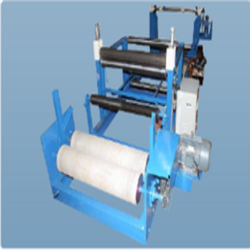Winding of Woven Fabric?
Winding of woven fabric?
Answer:Winding:
The winding is one in all the foremost necessary operation, that has especially occurred in spinning action. Besides, it's additionally necessary for fabric producing. In fabric producing, directly winding isn't most necessary, however, rewinding is thus necessary. The creation of huge yarn packages that may be simply unwound, is named winding. This makes exploitation the yarn on sequent machines each easier and a lot of economical.So we are able to say that the method of transferring yarns from the ring, bobbin, hank into an appropriate package is named winding. It should be electrical or mechanical.
For warp winding → cone, cheese, flanged bobbin.
For weft winding → pirn, cop.
Objects of winding:
• To transfer yarn from one package to a different appropriate package, this will be handily used as used for weaving method.• To remove yarns fault like hairiness, naps, slabs, foreign matters.
• To clean yarn.
• To increase the quality of yarn.
• To get a suitable package.
• To store the yarn.
Requirements of winding:
The requirements of winding could also be summarized as follow:• The fault level within the yarn should be reduced to an appropriate level.
• The yarn should not be broken in any way within the winding method.
• The yarn should be wound in such the simplest way on allow unwinding within the following method with a minimum of a problem at the desired speeds.
• The package size, form and build should be the foremost technologically appropriate for the actual finish use.
• The package size ought to be controlled to satisfy the actual economic needs.
• The winding operation should be geared to convey the simplest potential economic performance of the total method of fabric manufacture.
Elements of winding:
1. Yarn withdrawal2. Yarn tensioner
3. Yarn clearing
4. Stop motion
5. Take up
Types of winding:
• Precision winding.• Non-precision winding.
Precision winding:
By precision, winding ordered coils of yarn are arranged close in a very parallel or close to parallel manner. By this method, it's possible to supply the very dense package with the most quantity of yarn stored in a very given volume.Features:
• Packages are wound with a reciprocatory traverse.• Patterning and rubbing cause damage to packages.
• Package contains a lot of yarn.
• The package is less stable.
• The package is difficult and compact.
• The package is dense.
• The rate of unwinding of the package is low and therefore the method of unwinding is difficult.
• The unwound coil is organized in a very parallel or close to parallel manner.
Non-precision winding:
By this kind of winding the package is made by one thread that is arranged on the package at considerable helix angle so the layers cross each other and provide stability to the package. The packages shaped by this kind of winding are less dense but is a lot of stables.Features:
• Only one coil is used to form this package.• The cross winding technique is used.
• The package density is low.
• The minimum range of yarn is wound.
• The package shaped is soft and fewer compact.
• The stability is high.
• Flanges don't seem to be needed.
• The rate of unwinding is high and therefore the method is simple.
• The packages shaped have low density.




No comments